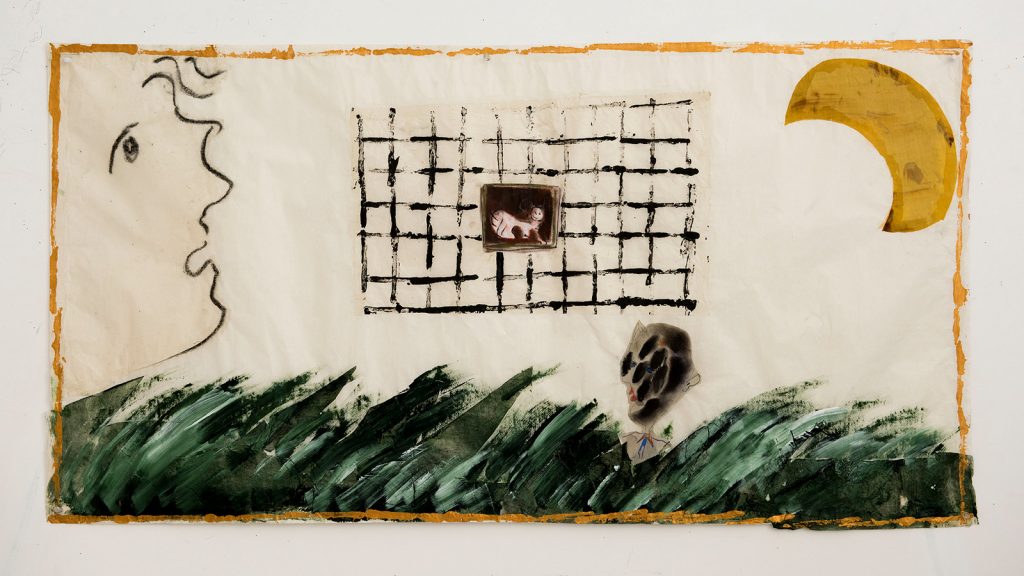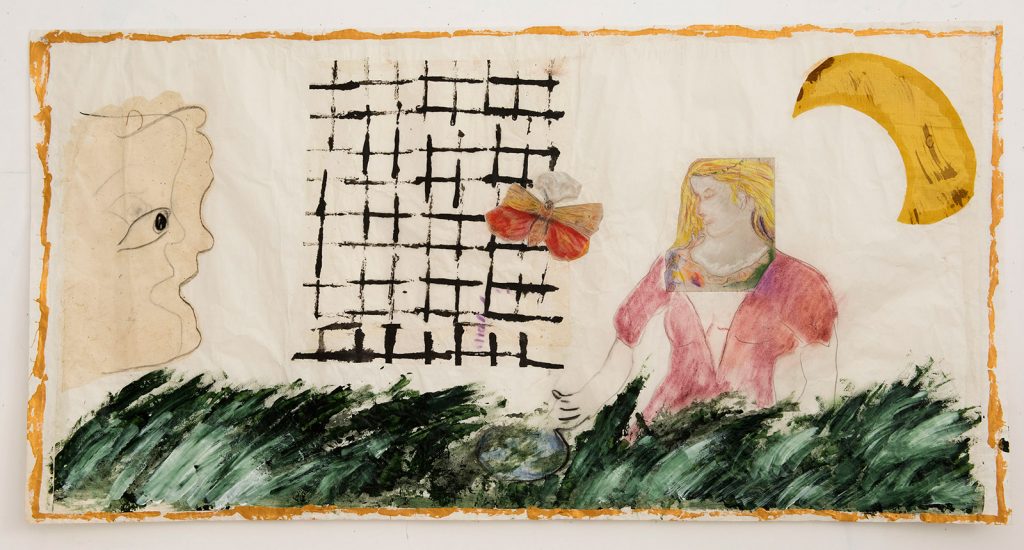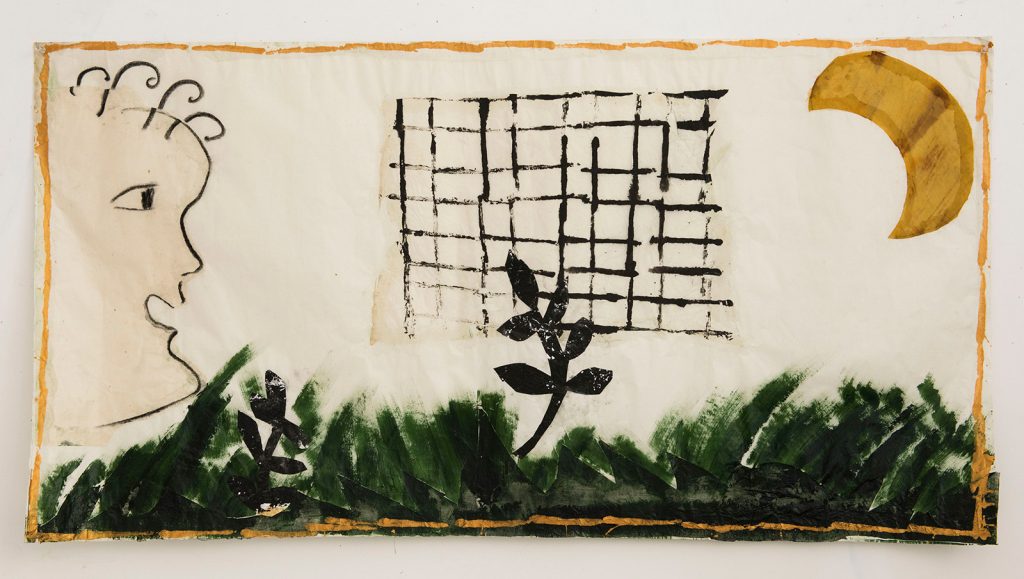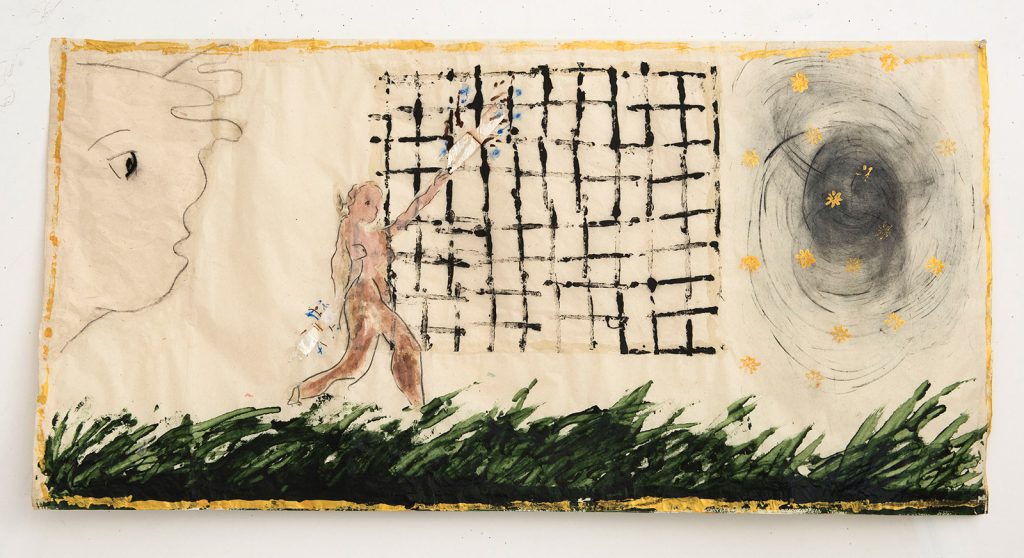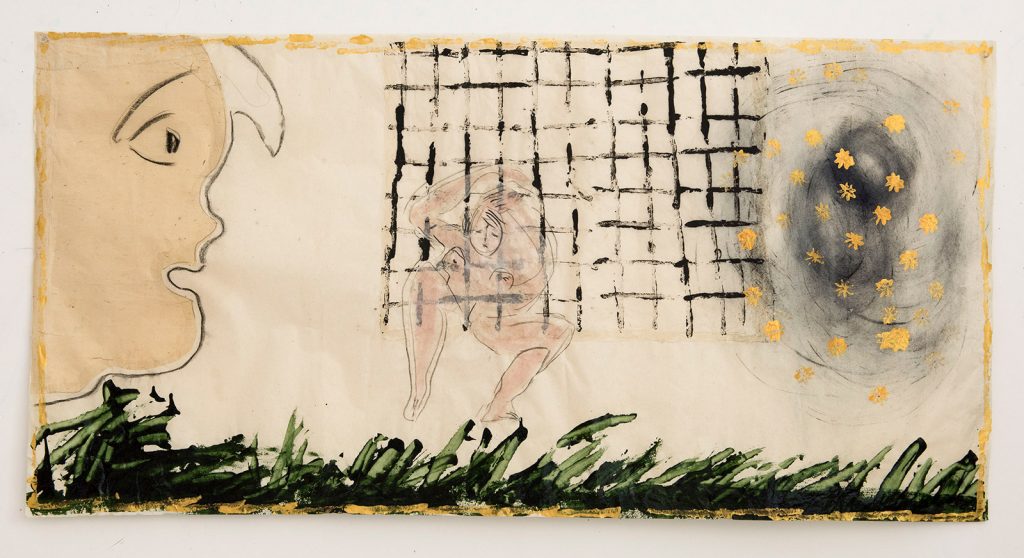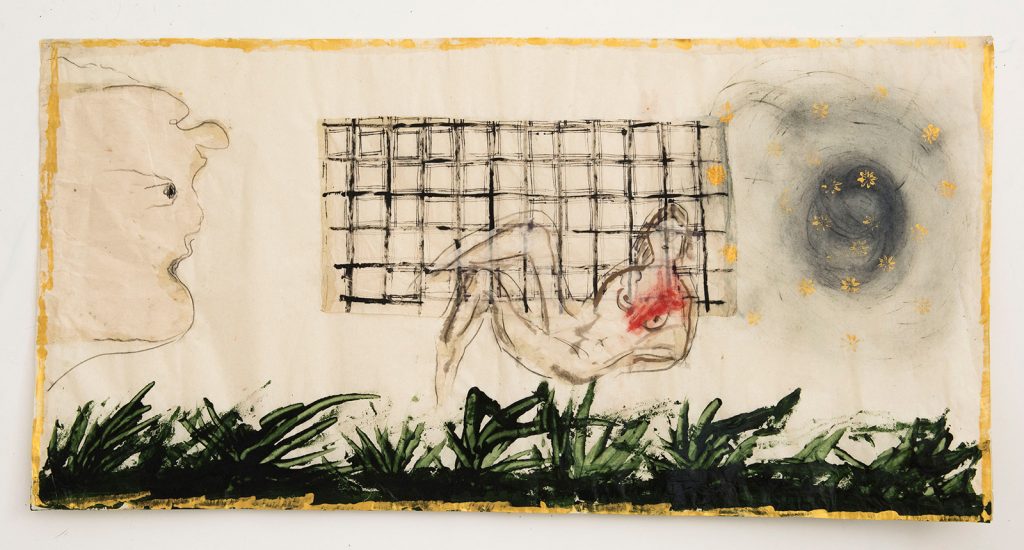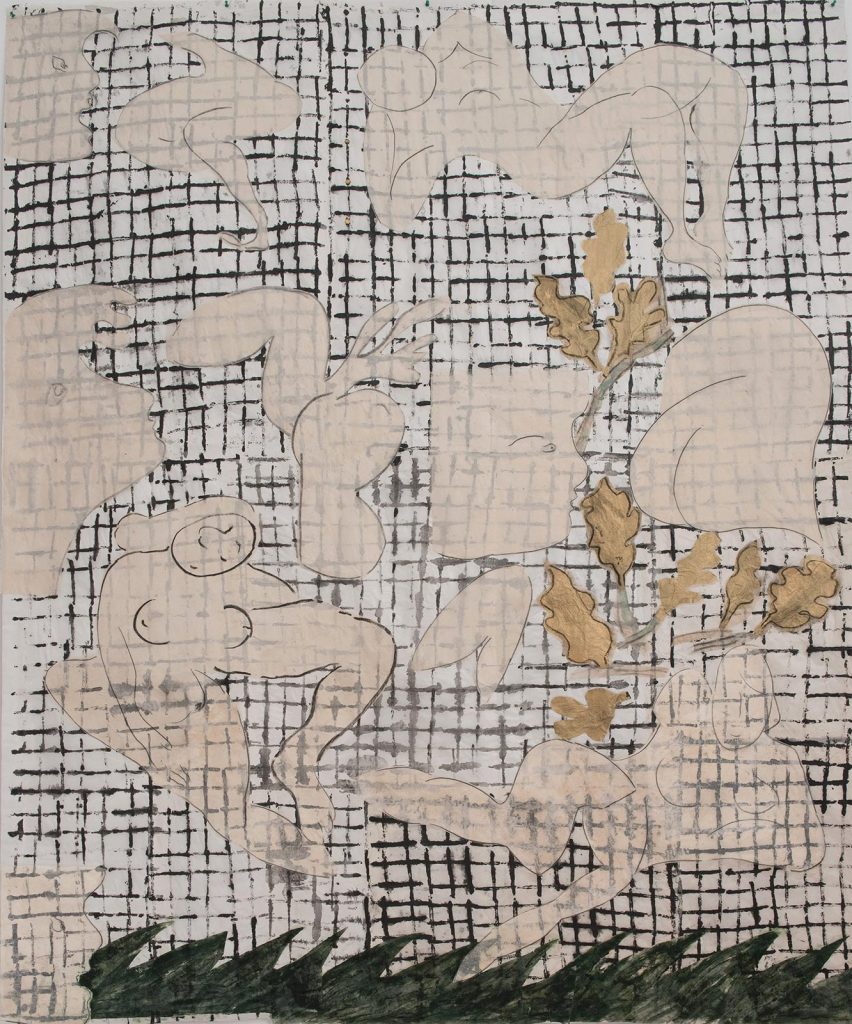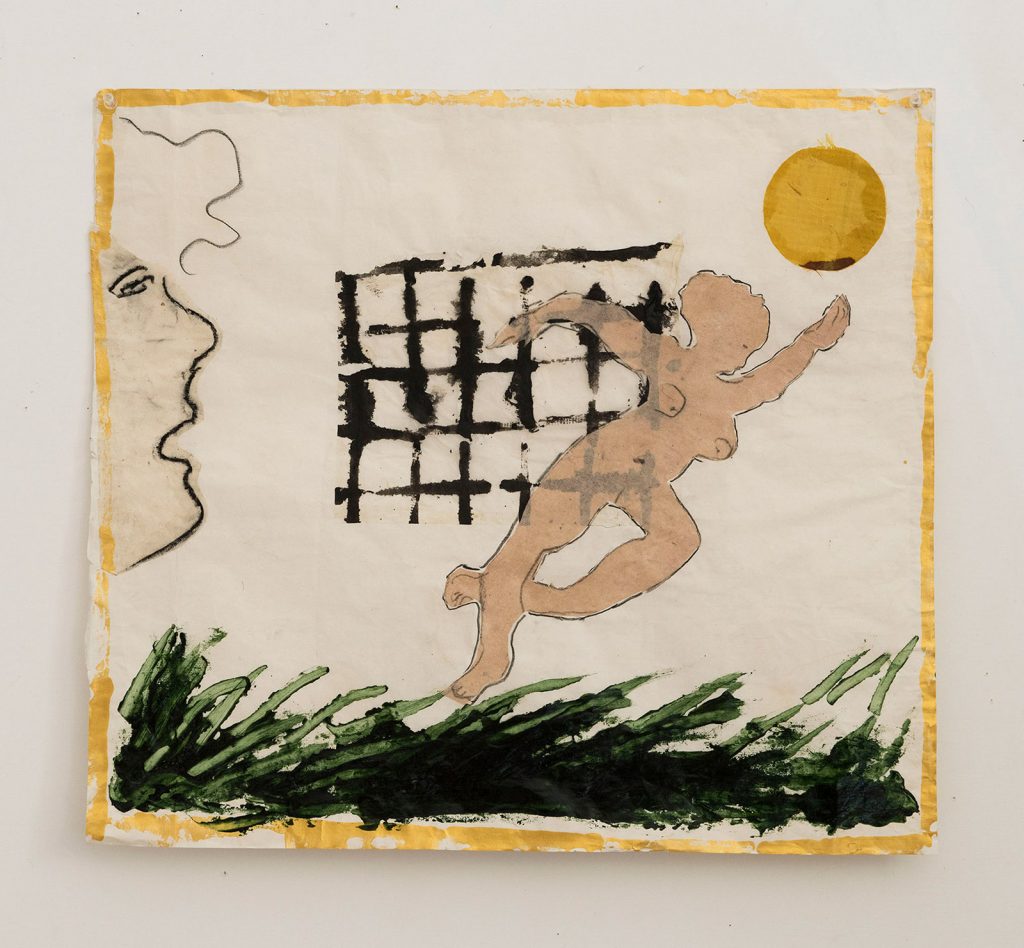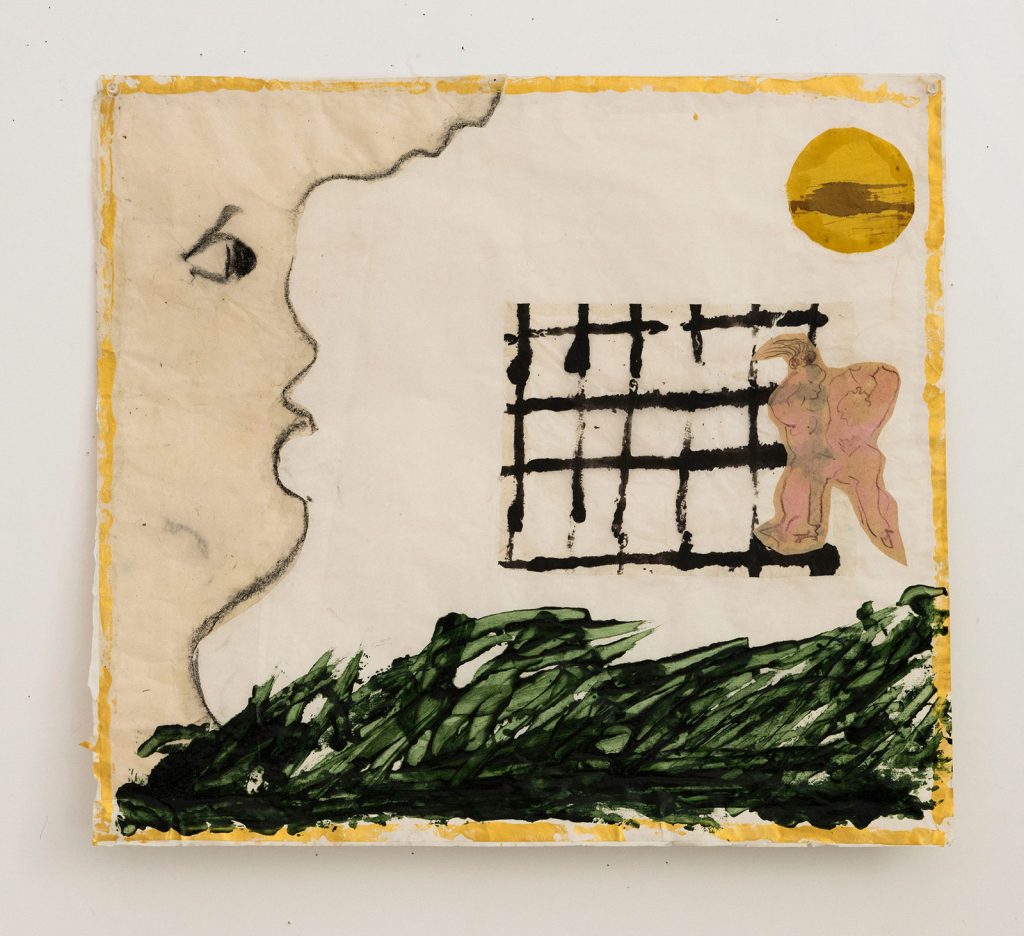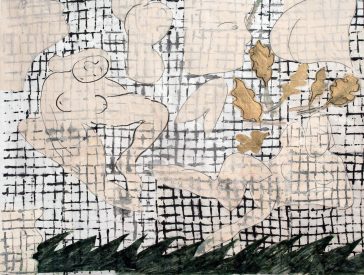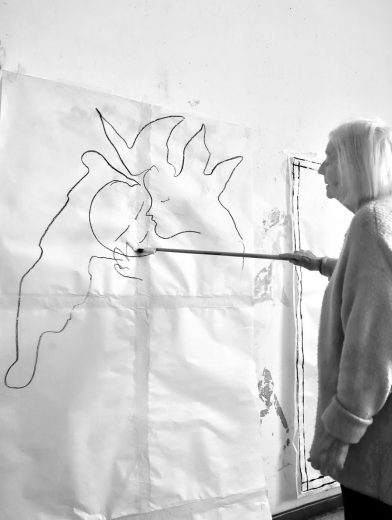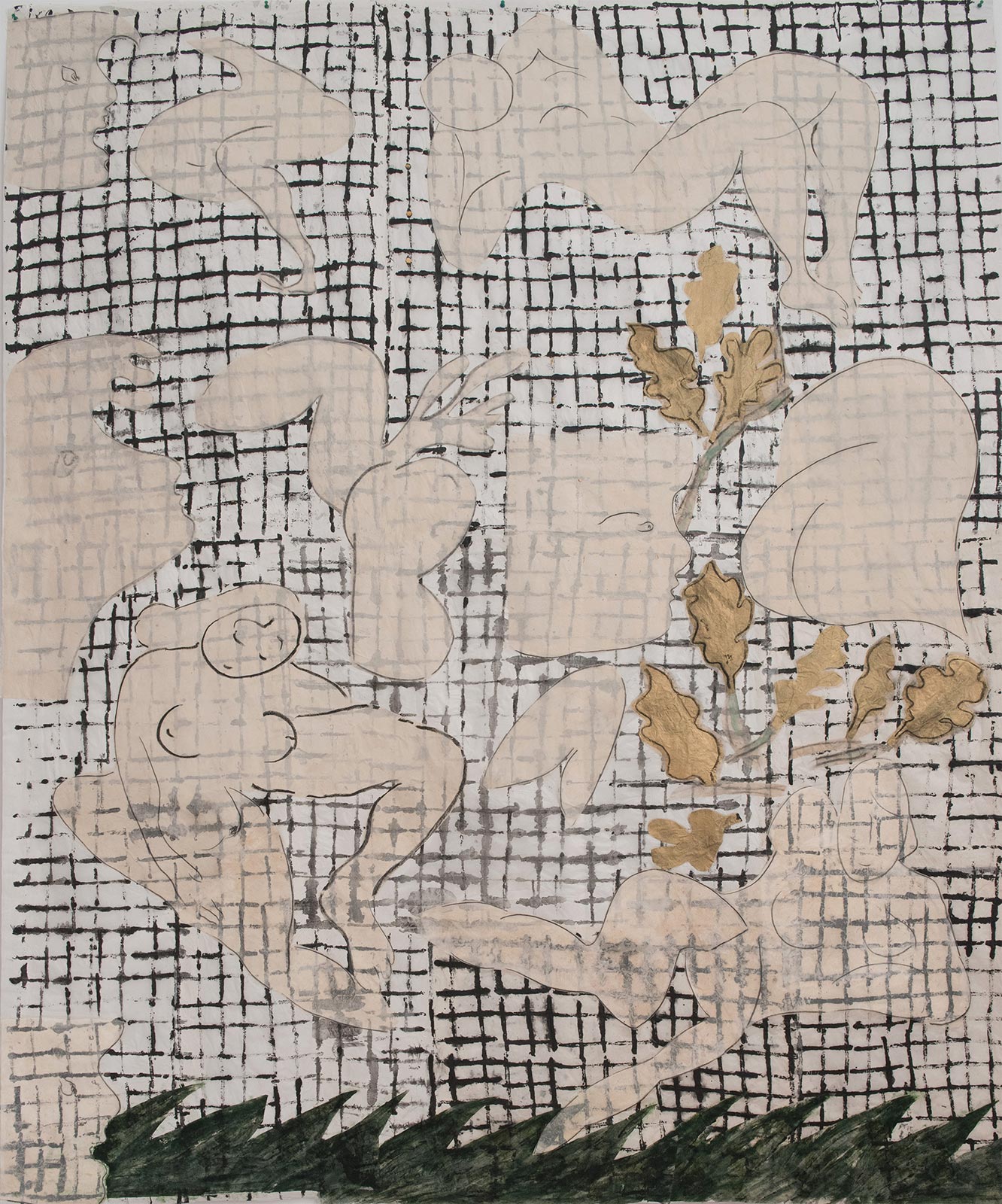
On display Isabella Ducrot’s new collection of works, “Eden”, where she uses paper both as an artistic medium and as a narrative thread.
As Nora Iosia writes in the text that accompanies the show: “Each page imposes its space on the viewer and is thus the stage of a brief tale. On it, few elements compose the narrative, so as to make room for silence to breathe on the page. Ducrot does not violate the paper’s color with her chromatic scheme; instead, she allows the paper take part in the narrative. Several colors recur in all the pieces: black, from both pencil marks and pigment; acid green; and gold, in the frames. Sporadically, a few other colors intrude upon the page: they are fleeting, there but to play a brief game with the spacetime afforded them.
The narrative centers around a visual epiphany: this is where the eye uncovers Beauty; Eros; Nature; Time; and the Other… This vision then morphs into awareness: it is the moment before Paradise is lost, the moment that precedes our awareness of existence as loss and death; it is a moment of transition from a golden age to the human condition. Yet the epiphany is not painful; here, the astonishment, the wonder, the fever of the Fall are emphasized and blend with the rapture that all visions evoke. What follows is the thirst for knowledge that moves the world itself and, through it, all of history, from its origin and across all time.”
Eleven works are on display; one of them is very large (240 by 200 cm): “In the largest piece within this Eden, with its two-meter base and its impressive height, the female and male bodies and shapes are welcomed on square paper, as if they were taken in by a large fabric sheet. Here a repertoire of infinite epiphanies takes shape; the images are almost overlapped, saturating the space and morphing into a choreography of events. […] Paper, scissors and glue are the building blocks of this Eden. Here everything is possible; there is no break between sign and significance; opposites coexist. The grid in the background allows the shapes to dance in the foreground, as Eros and Thanatos, exalting the beauty of body and its ephemeral harmony.”
Selected works
Gallery
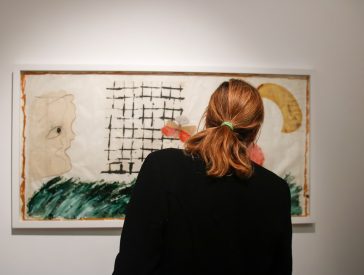
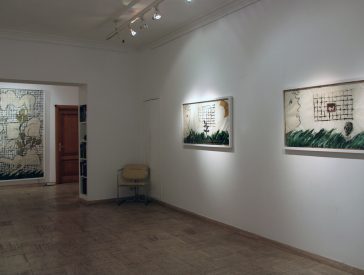
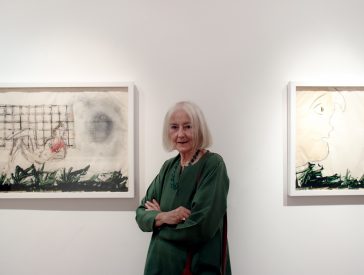
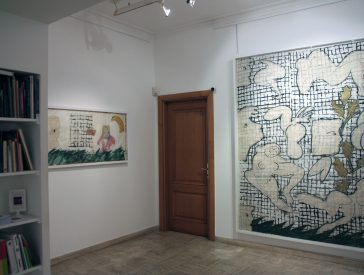
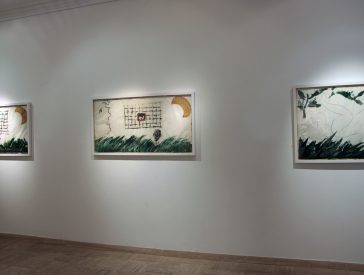
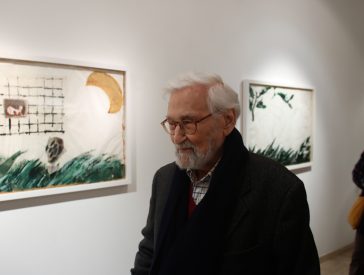
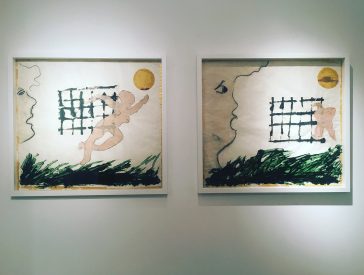
Critical essay
Isabella Ducrot "Eden" 2016
by Nora Iosia
“Eden” is Isabella Ducrot’s most recent collection. Consisting of eleven pieces, it focuses around paper, which serves both as the medium used by the artist and as a the collection’s narrative thread. Each page imposes its space on the viewer and is thus the stage of a brief tale. On it, few elements compose the narrative, so as to make room for silence to breathe on the page. Ducrot does not violate the paper’s color with her chromatic scheme; instead, she allows the paper take part in the narrative. Several colors recur in all the pieces: black, from both pencil marks and pigment; acid green; and gold, in the frames. Sporadically, a few other colors intrude upon the page: they are fleeting, there but to play a brief game with the spacetime afforded them.
The narrative centers around a visual epiphany: this is where the eye uncovers Beauty; Eros; Nature; Time; and the Other… This vision then morphs into awareness: it is the moment before Paradise is lost, the moment that precedes our awareness of existence as loss and death; it is a moment of transition from a golden age to the human condition. Yet the epiphany is not painful; here, the astonishment, the wonder, the fever of the Fall are emphasized and blend with the rapture that all visions evoke. What follows is the thirst for knowledge that moves the world itself and, through it, all of history, from its origin and across all time.
A male profile, drawn in pencil, dominates the collection; he is a careful, if unaware, spectator; might he be young? Female figures, natural elements and strange creatures appear before his glance. In the exchange between collage and the pencil drawings, everything that appears comes from somewhere else. The shapes are cut outs, often inserted on paper black and white square paper. The squares seem to indicate the fabric that moves events forward: they are a mathematical structure that supports the coming of the Other and unveils the rhythmic logic entwining things. Similarly, they indicate the inexorable randomness of events: nothing is predictable other than the movement of time.
Even in the largest piece within this “Eden”, with its two-meter base and its impressive height, the female and male bodies and shapes are welcomed on square paper, as if they were taken in by a large fabric sheet. Here a repertoire of infinite epiphanies takes shape; the images are almost overlapped, saturating the space and morphing into a choreography of events. The echo of the fabric’s woven pattern imposes its presence with rough, nude signs, black on white. They are essential and logical, calling towards them the shapes that emerge from the happy exchange with the collage. Nature’s herbs and leaves are not absent.
Paper, scissors and glue are the building blocks of this “Eden”. Here everything is possible; there is no break between sign and significance; opposites coexist. The grid in the background allows the shapes to dance in the foreground, as Eros and Thanatos, exalting the beauty of body and its ephemeral harmony.
Translation by Livia Sacchetti

